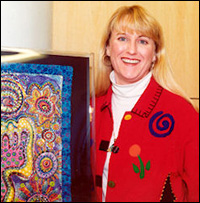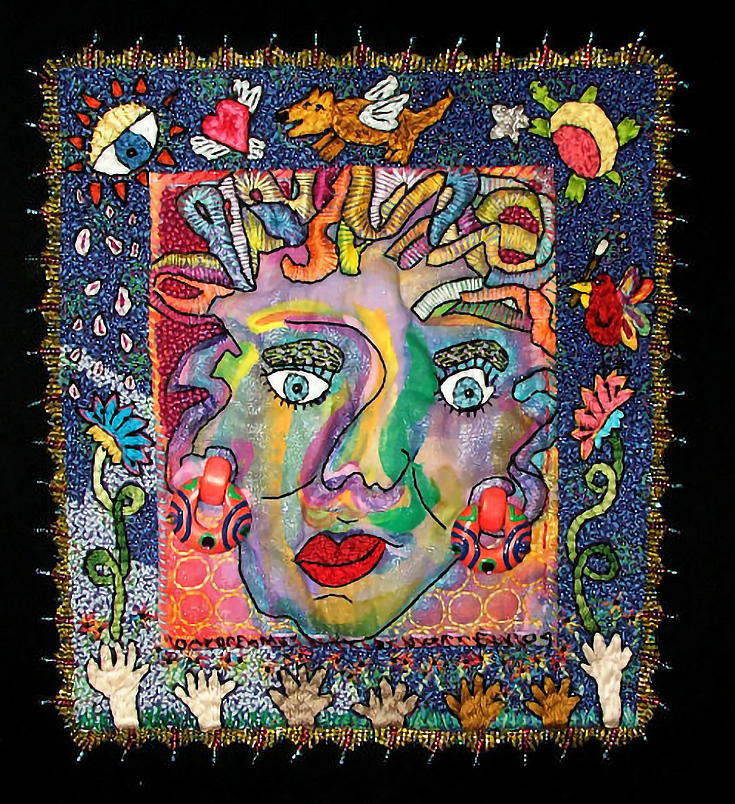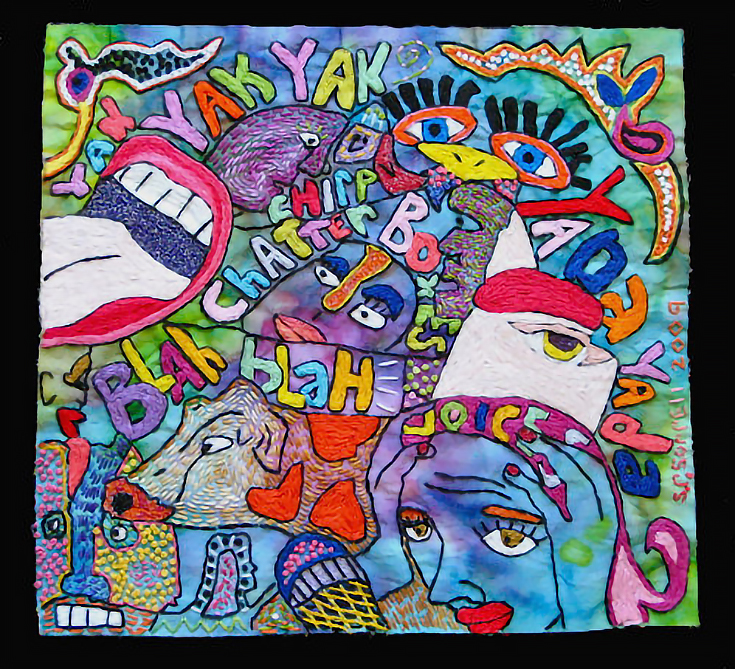Susan Sorrell became an artist in 1982 but it wasn’t until 1998 that she became a fiber artist. By a fluke, she took a watercolor class and the instructor introduced her to the art of quilting.
Knowing that she needed an edge to make it in the art world, and to “distinguish” herself from the other artists in her immediate community, she began investigating the craft and eventually became hooked.
Today, she shares what it is like to be a mixed media fiber artist.
Alyice: For those who don’t know, what is mixed media fiber art?
Susan: Mixed media fiber art uses fiber, like fabric or fabric stabilizers, as backgrounds. Then collage, embroidery, beading, paints, or drawings are attached to the surface to make art.
Alyice: As a mixed media fiber artist, you push the boundaries of traditional quilting by including both found and bought materials in your art. How has this changed the way you view fabric?
Susan: Fabric and fiber have been a great way to expand my way of painting, which is my first love, and making that painting 3-demsional. But since I am not a quilter, my biggest challenge is using the sewing machine.
Alyice: You do a lot of painting with thread and fabric. Is there any one rule that you follow regardless of style or design? Why or why not?
Susan: No rules; that is the rule I follow. I tried doing things the “correct” way like they do in quilting, but it frustrated me. As I got older I realized that there are no rules, just people who think they should box an artist in on how to use a certain art medium. I like color and the conventional rule is to use 3 colors in a painting but I don’t and this spills over to my fiber art.
Alyice: Most of the art you create is for show—designed to be hung and adored. What is the best way to preserve, and display, mixed media fiber art?
Susan: You can frame it like a watercolor painting as long as you can get air to breath in the framing, or you can use a Plexiglas box to mount the piece in.
I sew my fiber art to canvas that is later stretched around stretcher bars (the kind used for paintings) and hang it that way. If it gets dusty I use a hand vacuum to gently remove the dust.
Alyice: Before you go, can you tell us a little bit about how we can turn our doodles into fun whimsical pieces, like you?
Susan: Ahhh, you would have to take one of my online classes to get this secret. :) Some people have to work with a pattern and everything has to be spelled out for them. I don’t teach like that. I want my students to tap into their own creativity and not just copy my examples.
I will say this. . . there is a lot that goes into one of my fiber art pieces. There is a lot of hand embroidery and time. I can’t sit down and do complete a piece in one day. A piece evolves over several weeks.
I like to work on a bunch of pieces at one time so I don’t get bored. In fact, I have about 20+ works evolving as we converse.
To learn more about Susan Sorrell, stop by her site at CreativeChick.com.
This post may contain affiliate links.




